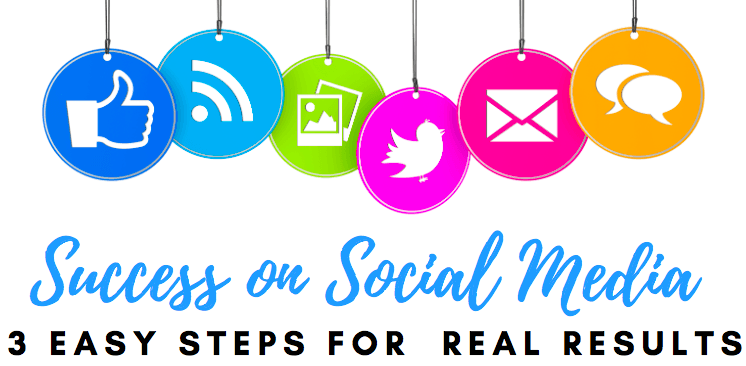Some launches are really successful while others fail spectacularly – even those with great products or services behind them. We’ll get to the bottom of these launch failures in this post.
Does this sound familiar?
You have a great business idea. Coaching, consulting, or maybe an online course. It would be so fun, and you’d have a great passive revenue stream. Doesn’t everyone these days? And they all make it look so easy.
So then you start creating. You invest in a variety of tech things that you think you need to support your course. You get some audio and video gadgets. You make a bunch of slides and worksheets. You outsource to some media company to grow your social media platforms and improve your website SEO. You’ve set up a website, a brand trademark, even an LLC.
You pour months of effort into making your course. You’ve spent money on all the things you’re supposed to. It’s time to launch.
So you open your payment portal, and your product is live! Enrollment is open! You blast it out on your social media channels and tell all of your friends to tell their friends. You refresh your analytics over and over, but…crickets.
Maybe you only got a few dozen people to sign up. Yikes. Or maybe it was just a small handful. How can that be?
For a new online entrepreneur, this is a disaster, and for more reasons than one. First, it feels like all that time and effort and creative energy has been totally wasted – all for nothing. Second, you’ve literally thrown money away in every direction – outsourcing, software, plug-ins, equipment. And worst of all, your dreams of making ‘freedom money’ with a profitable online course or other revenue stream go up in smoke. You’re totally defeated. Totally deflated.
If this sounds like you, you’re not alone. And if you haven’t even tried to launch your dream product because you’re afraid it will turn out exactly like this, you’re not alone.
I know what you’re thinking. Something along these lines:
- Your idea is terrible. No one cares.
- Your market is too crowded with awesome people already – why would anyone want to choose your product over theirs?
- You just aren’t cut out to be an entrepreneur. Stick to your day job.
But I’m here to tell you that it is NONE of those things.
The real issue is that you didn’t have a roadmap. You didn’t have anyone to show you step-by-step and action-by-action how to execute. Your journey from idea to disappointing launch was paved with uncertainty, unexpected hiccups, and a whole lot of ‘back to square one’ as you tried to figure it out on your own. And the kicker is that these hiccups are totally predictable and preventable.
I get it! I’ve certainly been there, and I’ve come out the other side with a realization that is…drumroll please…totally vanilla. Yeah, vanilla. Not sexy. Nothing secret or sophisticated about it. Most likely, your online business launch was a disaster for one or more of these three reasons.
In my experience, the most common mistakes that new online entrepreneurs make are these:
Number 1: A major mistake is not understanding the full scope of the project. If you start out with the end in mind (good advice) but don’t really know that path from here to there, you end up with an added layer of surprise at every turn. The surprise can be small or large, and usually comes with some decisions that can be overwhelming in terms of expense and tech confusion.
Why are some online platforms free, while others start at hundreds per month? Why are some email service providers free, and others start at $40 or $50 per month? Of course, the answer is in the functionality and features…functionality and features you haven’t thought through and therefore don’t know how to confidently choose. This stalls your progress, and lurks behind every corner.
If you had your pathway from idea to creation to launch all clearly laid out, and you knew the specifications of the delivery platforms needed to bring your idea to market, you wouldn’t be navigating this mess. You’d be smooth sailing.
Number 2: Another major mistake is missing opportunity to convert sales by not understanding the proper sequence or order of business.You’re doing things in the wrong order, and it’s costing you lots of time, money, and headaches. Your putting out marketing materials without having your sales page and payment portals set.
Maybe you didn’t consider that Facebook Live or post a ‘marketing material’ at the time. You are trying to gauge interest, but you aren’t capturing those who show interest. Tangled up in this is the tendency of new online entrepreneurs to overestimate their reach on social media (which is a key reason I’m very focused on an engaged email list – far more than any social media platform).
And hey – I’ve been guilty of this myself! I’ve done Facebook Live sessions topics that I didn’t realize my potential customers cared about so much, and I was surprised when they reached thousands of views, and continued over an hour with engaged comments and questions! When that unintentionally super-successful video was over, I sincerely regretted not having additional assets set up for my customers. You know why? Because it doesn’t necessarily translate into any super-successful outcome for my business. If there’s no offer or call to action, there’s no conversion. And the best time for that conversion is in the moment – not via follow up outreach – because you’re lucky if your followers see even 5% of what your organic posts (not paid ads – that’s different, and costly!). It’s worth repeating – we’re talking about your followers. People who already like you and are interested in your stuff.They see only a tiny fraction, so you’ve got to be ready when you have engagement.
Number 3: A third and very common mistake new online entrepreneurs make is not validating their ideas in the market. This is essential to ensure you have a product or service that people not only want, but they want enough to pay for! After all, in the information age, you can find out lots of stuff for free online – you already know that because that’s how you’ve been teaching yourself so far – DIY with a hodgepodge of random sources and incomplete information. This is NOT the way to go. Instead, you’ve got put your ideas in front of potential customers – not family and friends who will support and encourage you, but the actual people who might buy from you (or not). We dive deep into this for The Branding Rx, but here’s the short version:
As part of your market testing, you should figure out whether your offering actually solves the problems and pain points your intended customers have, and you should also find out why the current (and free) resources aren’t satisfying the needs of the customer completely. Of course, this is so that you can be sure your offering DOES fill that unmet need. Usually, people decide to pay for an online product or service because the other options are insufficient for one of these common reasons:
a) Existing information or options aren’t specific enough. As an example, my courses are for physician entrepreneurs, and we address the unique challenges and risks that physician online businesses face – medical liability, intellectual property conflicts with employer contracts, reputation concerns that pose little if any problems for the general public but are VERY important to healthcare professionals.
Or, it’s because
b) Existing resources don’t make the steps and sequencing clear (see above). This is very common! You can find an answer to a question for free online, but it’s much harder to find a complete pathway and expert guide for free online. Piecing together an online education will have you jumping all around among sources and different content – articles, podcasts, videos. All of these might be very high quality, but they aren’t a system or a program or a process.
Add to this mix that there are many, many purported experts online nowadays – it can be hard to know who to trust. The simple solution for you is to always look for or ask for the proof! Does the person who is selling you a plan, technique, resource, coaching, consulting, etc actually have experience achieving the results you hope to achieve? This sounds like a no-brainer, but it’s critical and often overshadowed by shiny promotional content, slick marketing speak, and enticing promises. So you should offer this kind of proof to your customers, and you should expect it from the businesses and experts you hire.
How to fix your online business so your launch is successful and profitable
So, here’s how to avoid the biggest mistakes new online entrepreneurs make and turn your idea into income faster – with fewer headaches:
Map out the full scope of your project plan.
Like a simulation, walk through exactly what you’ll need to have in place to make your vision a reality. Know your specs. What will you need to deliver? And yes, you can do this successfully at just about any price range you can imagine. I’ve launched 5 figure courses that cost me zero dollars to create and deliver (beyond the laptop and internet that I already had). Now, I don’t necessarily recommend this – just saying that it can be done. You don’t have to spend a lot of money to have a successful online businesses. That’s part of the beauty. But you do want to be sure that your plans and any associated tech selections will do the job you envision and that your customers expect for the price point!
Get your offers and calls-to-action ready and set before you go.
Resist the urge to just go out there with your market testing materials if you don’t have the rest of your business model all set and ready to go. You’ll lose time AND money trying to get back those customers who would have converted if you had your ducks in a row. But now, although they enjoyed your post or webinar or video, it’s over and they’re gone. The internet is busy, and so are your customers, so it could be weeks or months before they think of you again. This isn’t necessarily for lack of interest. They probably don’t even know you have a product that they would want! Just think for a moment, and I’m sure you’ll agree – you’ve visited websites in the past that were super, and you may have even bookmarked some content – but how often do you make the effort to go back? Contrast this to when their great content comes to you.Now you’re reminded, you’re interested, and you become fan and possibly even a customer. The same is true of your potential customers. This is also a reason that you absolutely must commit to a baseline of consistency with your posts, so you’re showing up on a regular basis for those who want to see and read and hear more from you!
Validate your idea in an actual customer market so you know what will sell and what won’t.
You need this before you need an LLC, I promise. You need this before you need a trademark, I swear. As a business owner who has done all of this in the wrong order before, I want you to know that your market validation is more important that all of these documents. Of course, if you have a particularly world-changing innovation that needs patent protection, do your due diligence before you listen to me, but for most online businesses for coaches, consultants, and courses this holds true. Get your paying clients first. I’ve had many students and clients who have lots of these assets in place before they’ve even outlined a product or done any market testing. This doesn’t have to be fancy or formal, but it should be deliberate. It really does make the difference between being profitable early, and feeling like you’re out of money before your business has any traction.
So there you go – three common mistakes and their solutions. If you’ve read this far, I know you’re serious about your business, so congratulations to you! You’ve already cleared the first hurdle. Most people don’t take their own businesses seriously at first, so of course, neither does anyone else. If you’re ready to make this your time, and go all-in for real results, enroll in The Rx Series. You can learn more and read physician entrepreneur testimonials here. See you on the inside!
Pin for later!








